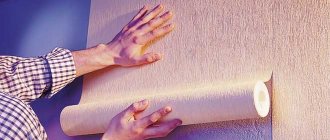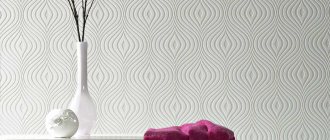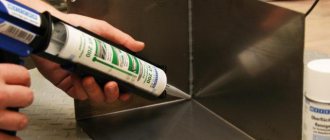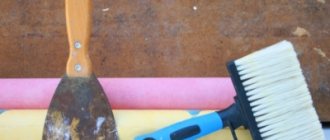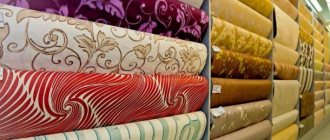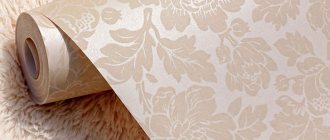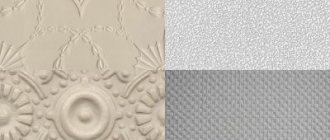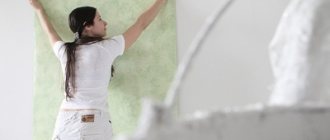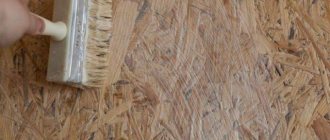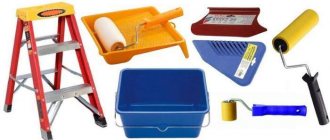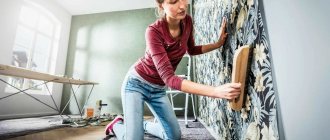The assortment of the modern building materials market is constantly updated and replenished with various new building materials. Gradually, many new products are gaining popularity among consumers. This happened with non-woven wallpaper.
Non-woven wallpaper appeared on the finishing materials market relatively recently, but is already in great demand among consumers.
Non-woven fabric, what is it?
To make non-woven fabric, special modified paper fibers and various additives are used. The viscous substance is processed, pressed, and various special components and impregnations are added. The secret of making non-woven fabric from each manufacturer is strictly individual and secret.
The components are not disclosed and are kept strictly confidential. The reason for such secrecy is that one or another component can completely change the characteristics and properties of non-woven fabric.
Properties of non-woven fabric
This material has found its application in the manufacture of various materials. The popularity of non-woven fabric is due to the distinctive properties of the material:
- Non-woven fabric is stronger than regular paper.
- It is resistant to fire.
- Cannot be deformed.
- Increased resistance to contamination.
- When dried, the material does not lose its original data.
- It is wear resistant.
Non-woven fabric, thanks to its excellent technical characteristics, is widely used in various fields of industry, medicine, and so on. This material has replaced ordinary paper in the production of wallpaper.
Types of non-woven wallpaper
The modern construction market offers a wide range of non-woven wallpaper. To choose the right wallpaper, you first need to know the difference between non-woven wallpaper and non-woven wallpaper.
Non-woven wallpaper. These products are a fabric consisting of several layers of non-woven fabric. All layers are tightly welded together. There are many varieties of such wallpaper: smooth, embossed, patterned, and so on. The difference between these products is that they can be used as a base for painting various surfaces.
Non-woven wallpaper. This type of wallpaper consists of two layers: the bottom layer is non-woven and the top layer is paper or fabric. In this case, the technical characteristics of non-woven wallpaper depend on the material of the top layer.
Such wallpaper has many advantages: the material does not absorb water, is resistant to deformation, has good air permeability, and does not lose its appearance during the pasting process.
During finishing work, glue must be applied to the wall surface.
Current ideas
This season, rich mint and turquoise shades are in fashion. Therefore, coatings with floral and plant motifs, made in these colors, are quite relevant.
An original idea is picturesque photo wallpaper or wallpaper with an individual design. With their help, you can focus on the style direction and achieve a change in the mood of the environment.
The print for printing is selected either using a catalog or from your own collection of photographs.
The advantages of non-woven wallpaper
Thanks to the use of various special additives in production, wallpaper has a large number of advantages:
- Non-woven wallpaper perfectly masks minor imperfections on the surface of the walls.
- This type of material allows air to pass through well.
- Wallpaper has an excellent property - moisture resistance.
- They are resistant to dirt and sunlight.
- Do not lose original external data for a long time.
- The gluing process will not cause any difficulties.
In the process of finishing work, it is recommended to glue non-woven wallpaper end-to-end. Thanks to its excellent technical characteristics, the wallpaper does not stretch or dry out.
Preparation of materials and tools
Before pasting the walls, it is necessary to prepare tools and materials in advance: a level, a stationery knife, a spatula, a roller, a pencil, a tape measure.
It is recommended to immediately cut the wallpaper itself into strips of the required length. Wallpaper with a pattern should be measured taking into account the allowance for joining the pattern.
Note!
Wallpaper for the bedroom - 125 photos and videos of stylish and beautiful ideas for decorating a bedroom using wallpaperPaper wallpaper: TOP-130 photos and video reviews. Advantages and disadvantages of paper wallpaper. DIY gluing instructions. Colors and shades
3D wallpaper - 130 photos and videos describing how to use 3D wallpaper with your own hands
Subtleties of choice
To choose the right non-woven wallpaper you need to know some nuances:
It is easy to distinguish a fake from real non-woven wallpaper. It is enough to pay attention to the appearance of the material. Genuine wallpaper has a matte texture. The structure of non-woven wallpaper is fibrous. This is clearly visible in the cut.
Profile for drywall: dimensions, types, purpose, features of selection and application (95 photos)Knauf putty - technical characteristics, application and description of various types of putty
- Which brick is better for building a house?
Natural non-woven wallpaper is resistant to minor mechanical stress. You can check this on the wrong side of the material using your fingernail.
When choosing a material, you should decide which type of non-woven wallpaper is most suitable for finishing the room. It is necessary to consider whether the coating is planned to be painted in the future. You should correctly assess your financial capabilities.
Be sure to consult with specialists if you have doubts or various questions. You can first familiarize yourself with photos of various types of non-woven wallpaper to make it easier to decide on the choice of material.
Specifics of working with glue
It is worth noting that non-woven material is much heavier than paper, as a result of which working with it requires the use of special adhesives. All major manufacturers produce them.
By the way, gluing two-layer non-woven wallpaper will significantly simplify future repairs.
After removing the decorative layer, the bottom one will become the basis for a new finish. It just needs to be primed.
How to properly glue non-woven wallpaper
If it seems easy to cover wall surfaces with non-woven wallpaper, you should not neglect the advice of experienced specialists and follow some rules:
- The surface of the walls should be a tone lighter than the color of the selected wallpaper. This is very important, since this material is more transparent than regular paper.
- For gluing, only special glue should be used. Before starting work, you must carefully study the instructions for working with non-woven wallpaper.
- During the gluing process, strips must only be glued end-to-end.
- When covering surfaces with vinyl-coated wallpaper, you should be more careful and careful, due to the fragility of the material.
Thanks to its excellent technical characteristics and a large number of advantages, non-woven wallpaper is popular with most consumers.
Rules for assessing the amount of glue applied
To assess whether a sufficient amount of adhesive has been applied, after covering a section of the wall with it, you need to conduct an experiment - draw a pattern in this place. If it works, then there is enough glue.
Paper wallpaper - 145 photos of the best design options for paper wallpaper- Gray wallpaper - fresh and beautiful ideas for using wallpaper in gray tones (155 photos and videos)
Wallpaper for the nursery: 165 photos and videos of interesting options for decorating a nursery with stylish wallpaper
Remember: both excess and lack of solution are equally bad. In the first case, the glue may go beyond the edges of the joint of the canvases, which will lead to the formation of unsightly stains; in the second, the wallpaper may simply peel off.
